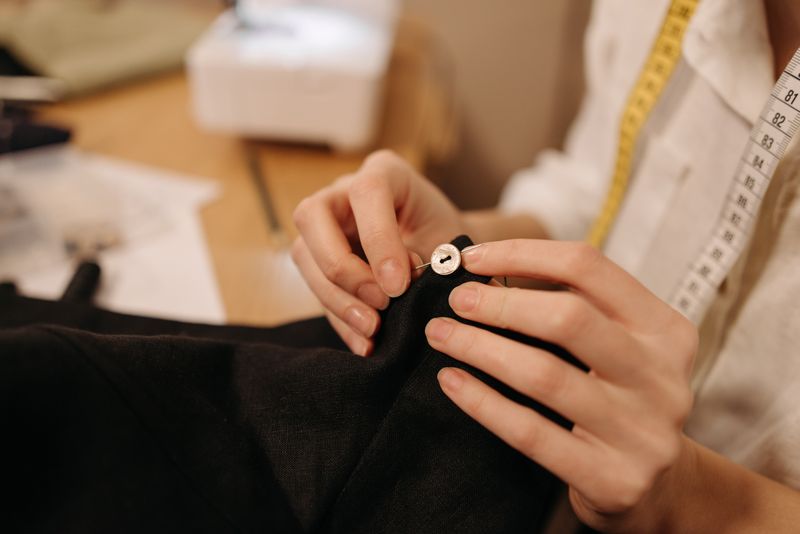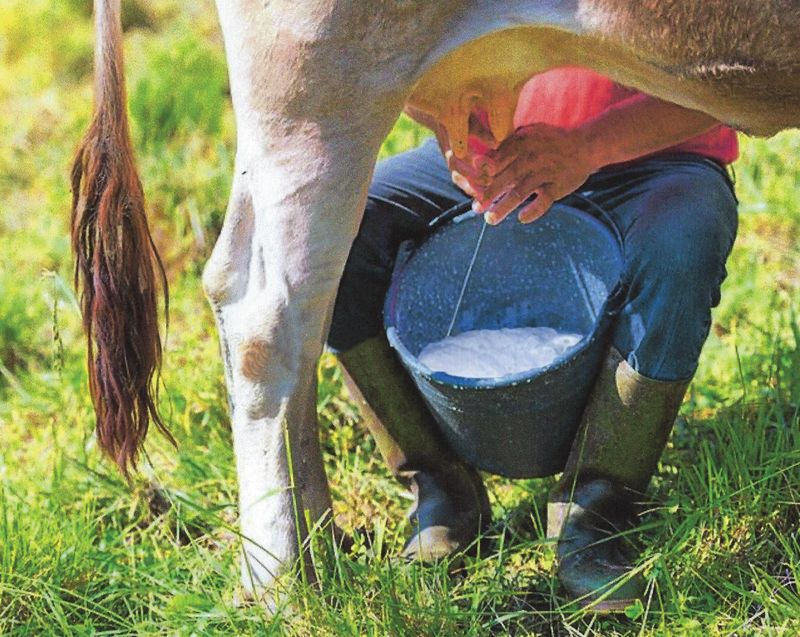14 Retro Skills from the ’50s and ’60s That Would Surprise Kids Today

Take a trip back to a time when life was hands-on, and everyday skills were a necessity, not just a hobby. This journey through the ‘50s and ‘60s uncovers once-common talents that have faded in today’s digital world.
From perfectly ironing a shirt to mastering the art of handwritten letters, these skills reflect an era where practicality and self-sufficiency reigned supreme.
While they may seem quaint now, they offer a fascinating glimpse into a time when life moved at a different pace—one stitch, note, and home-cooked meal at a time.
1. Typing on a Typewriter

Before computers, mastering the typewriter was an essential skill. Kids tapped on typewriters, learning accuracy with each keystroke. Typos required manual correction, making precision crucial.
The rhythmic clatter was a familiar sound in homes and schools. As digital keyboards took over, the tactile experience of typewriting became a nostalgic memory.
This skill emphasized focus and care, qualities that shaped diligent workers. Today, typewriters are relics, symbols of a slower, more deliberate approach to writing, far removed from the immediacy of modern typing.
2. Reading Maps

Navigating the highways with a paper map was once a rite of passage for young travelers. In the ’50s and ’60s, kids learned to unfold vast maps, deciphering routes with their families on road trips. These maps, free from GPS and smartphones, sparked real-world adventure.
While today’s navigation is instantaneous, the old-school approach taught planning and spatial awareness. The art of map reading has faded, replaced by digital directions and voice commands.
Yet, the skill remains a testament to patience and problem-solving, often leading to unexpected discoveries along the way.
3. Sewing by Hand

Sewing by hand was once a domestic necessity, especially for kids in the ’50s and ’60s. Youngsters learned to mend clothes, sew buttons, and create simple garments. This skill fostered patience, creativity, and self-sufficiency.
In today’s fast-fashion world, sewing by hand is less common, often replaced by ready-made solutions. Yet, the craftsmanship involved in hand sewing endures, appreciated by hobbyists and artisans.
Creating something by hand offers a sense of accomplishment, a stark contrast to our disposable culture, reminding us of the value in repairing rather than replacing.
4. Operating a Rotary Phone

Dialing a rotary phone was once a common task for youngsters. In the ’50s and ’60s, kids memorized phone numbers and patiently dialed each digit. The satisfying click of the dial was a familiar sound in households.
Today, smartphones have rendered rotary phones obsolete, their mechanics mystifying to many. This skill exemplified an era where communication was deliberate and thoughtful.
Understanding the mechanics of a rotary phone taught patience and number recognition. Despite being a relic, the rotary phone remains an icon of a slower-paced, less urgent time.
5. Roller Skating

Roller skating was a beloved pastime in the ’50s and ’60s, with kids flocking to rinks and sidewalks. It was more than fun; it was a social event, promoting balance and coordination.
Unlike today’s hoverboards and electric scooters, roller skating required physical effort and skill. Kids learned to glide, spin, and stop without modern conveniences.
This activity fostered community spirit and outdoor play, contrasting sharply with today’s screen-centered entertainment. While roller skating still exists, its heyday as a cultural phenomenon remains a charming memory of simpler times.
6. Making Popcorn on the Stove

Stovetop popcorn was a kitchen staple before microwaves. Kids eagerly watched kernels pop in sizzling oil, a sensory delight. Preparing popcorn on the stove was both a fun activity and a lesson in patience.
Today, microwave bags have simplified the process, but they lack the hands-on charm. Stovetop popping taught kids about heat, timing, and caution.
While this method has faded, it remains a nostalgic treat that connects us to the past. The simple joy of homemade popcorn evokes memories of family gatherings and movie nights.
7. Using a Slide Rule

Before calculators, slide rules were essential for complex calculations. Teens wielded these tools in math and science classes, mastering logarithms and multiplication.
The slide rule’s mechanics encouraged logical thinking and precision. Though portable calculators are now ubiquitous, the slide rule represents an era of manual problem solving.
This skill highlighted a hands-on approach to learning, contrasting with today’s digital assistance. While it has largely disappeared, the slide rule remains a symbol of intellectual rigor and ingenuity in education.
8. Playing Jacks

This was a popular playground game in the ’50s and ’60s, requiring dexterity and strategy. Kids tossed a ball and swiftly grabbed metal jacks, honing their hand-eye coordination.
Unlike today’s digital games, jacks offered face-to-face interaction, fostering social skills and competition. The simplicity of the game was its charm, engaging children in physical play.
Though overshadowed by electronic entertainment, jacks remains a nostalgic pastime. It serves as a reminder of an era when games were tangible challenges, demanding skill and focus, bringing friends together in friendly rivalry.
9. Canning and Preserving Food

Canning and preserving food was a vital skill for families in the mid-20th century. Kids learned to sterilize jars, prepare fruits, and seal them for future use. This practice ensured fresh produce year-round, promoting self-reliance.
Today, canned goods are readily available, and the tradition has waned. However, canning remains a cherished skill among homesteaders and food enthusiasts.
Preserving food taught valuable lessons in resourcefulness and patience, connecting families to seasonal cycles. It stands as a testament to a time when self-sufficiency was a household priority, contrasting with our convenience-driven lifestyle.
10. Writing with a Fountain Pen

Writing with a fountain pen was an art form in the ’50s and ’60s. Children practiced penmanship with elegant strokes, learning to refill ink cartridges carefully. The fluid motion of the pen on paper was a tactile pleasure.
Nowadays, convenience often trumps elegance, with ballpoint pens dominating. Yet, fountain pens still hold a niche appeal for those appreciating fine writing instruments.
This skill emphasized attention to detail and aesthetics, fostering a connection between writer and text. It brings a sense of elegance and permanence, starkly contrasting with digital communication’s transient nature.
11. Building Treehouses

Building treehouses was a creative adventure for kids in the ’50s and ’60s. Equipped with hammers and nails, they transformed backyard trees into secret hideaways. This hands-on activity taught basic carpentry skills and teamwork.
Now, prefab playsets often replace homemade structures, but the charm of a rustic treehouse endures. It was a symbol of imagination and independence, where children’s dreams took flight.
Constructing a treehouse emphasized resourcefulness and problem-solving. The experience fostered a deep connection with nature, a stark contrast to today’s screen-centric play, offering an enduring sense of accomplishment.
12. Milking a Cow by Hand

Milking a cow by hand was a daily chore for farm kids in the ’50s and ’60s. It required patience, rhythm, and gentle handling. This task connected children to the source of their food, fostering a deep respect for animals.
In modern times, milking machines have automated the process, making hand milking a rarity. However, the skill remains alive in small farms and educational settings.
This hands-on experience taught responsibility and care, a tangible link to agricultural roots. It’s a reminder of a time when manual labor was integral to daily life, offering a valuable perspective on food production.
13. Whittling Wood

Whittling wood was a common pastime for kids in the ’50s and ’60s, requiring only a pocketknife and imagination. Children carved toys and figurines, honing fine motor skills and creativity.
Today, digital crafts and toys have largely replaced this simple pleasure. Yet, whittling remains a beloved hobby for those appreciative of handmade artistry.
This skill emphasized patience and craftsmanship, offering a meditative escape from daily routines. It stands as a testament to the beauty of creating with one’s hands, a stark contrast to the instant gratification of modern entertainment.
14. Fixing Broken Toys

In the ’50s and ’60s, fixing broken toys was a common activity for resourceful kids. They used glue, tape, and ingenuity to breathe new life into cherished items. This practice taught problem-solving and persistence.
Today, broken toys are often discarded, replaced easily by new ones. However, the art of repair promotes sustainability and creativity.
Repairing toys offered a sense of accomplishment and respect for possessions. It encouraged children to value what they had, contrasting sharply with the disposable culture of today. This skill remains a valuable lesson in resourcefulness and conservation.
